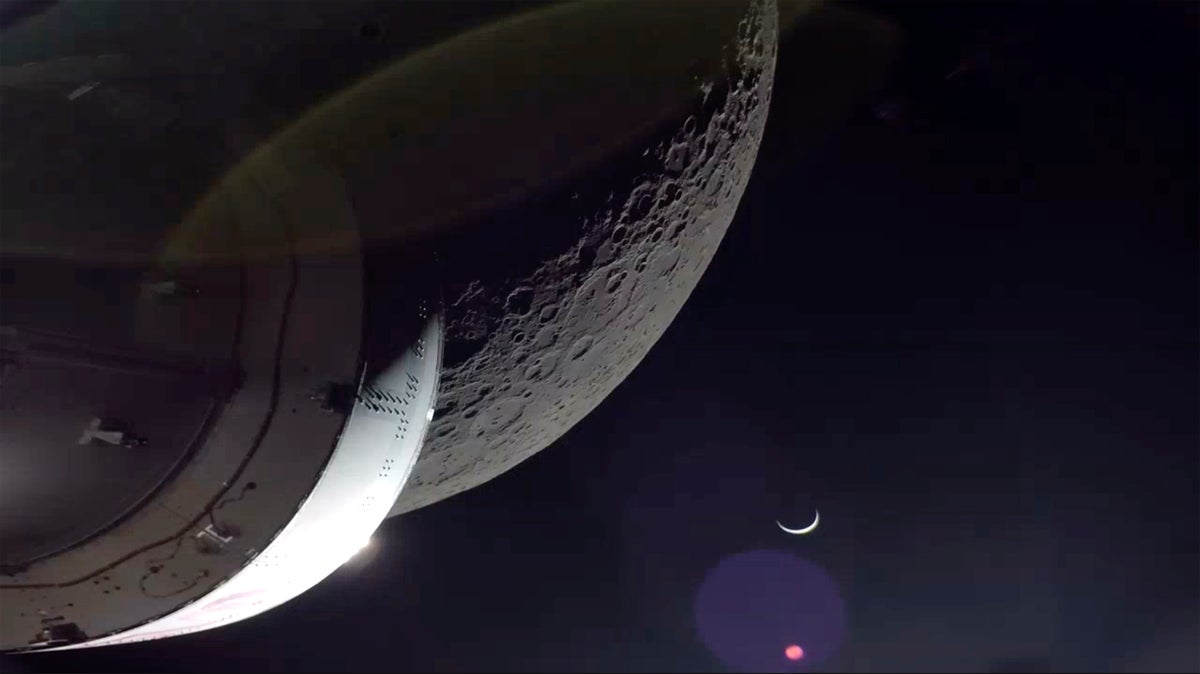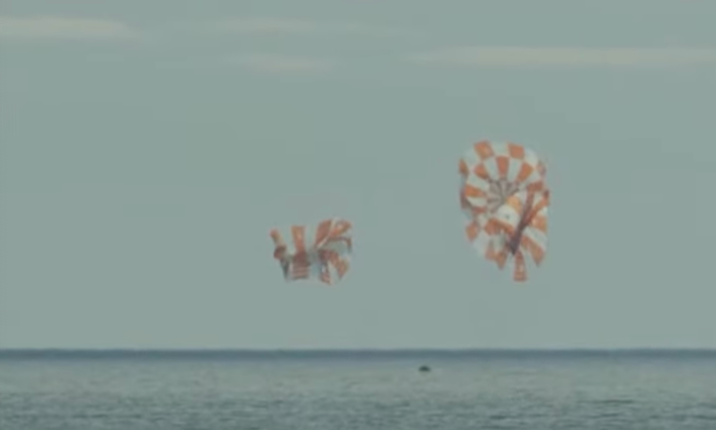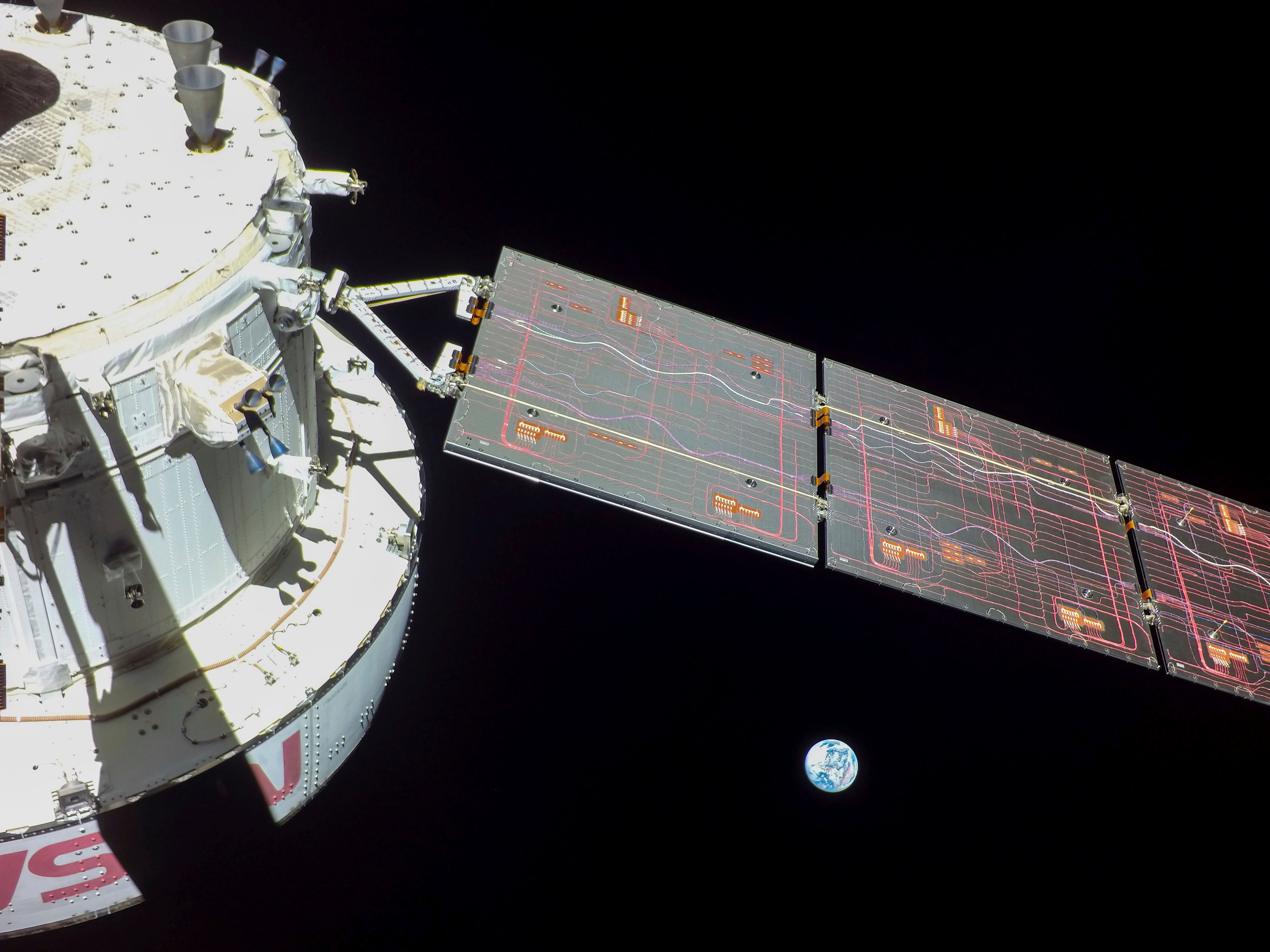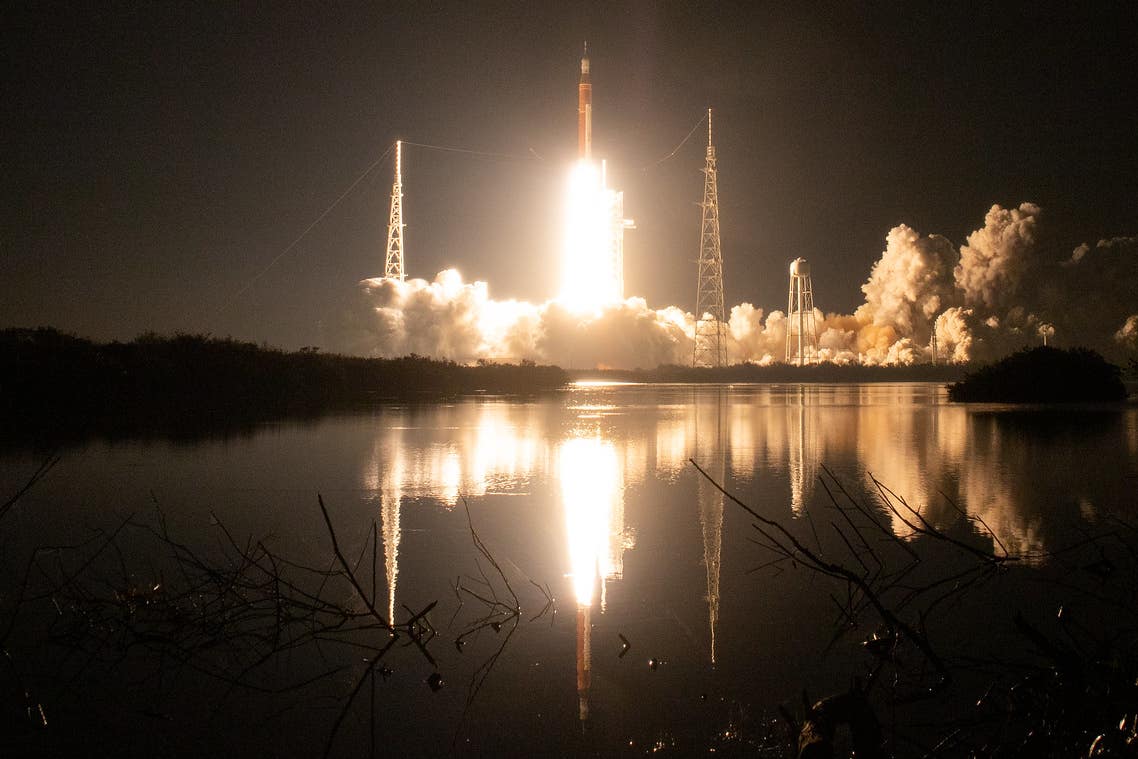
“There it is, high over the Pacific, America’s new ticket to ride, to the moon and beyond,” was the message from mission control.
Nasa’s 25-day Artemis I mission came to a dramatic close on Sunday morning, as an unmanned Orion capsule returned from its trip around the moon to reenter Earth’s atmosphere, before splashing down in the Pacific Ocean off the coast of Mexico.

A US Navy craft, the USS Portland, was on hand with a team of divers using a special winch to recover the ship.
The arrival marked an important step in the Artemis programme, an ambitious initiative to get human astronauts back on the moon by 2024, part of a larger effort to foster a continued human presence there and lay the groundwork for the eventual human exploration of Mars.
“It’s historic because we are now going back into space, into deep space, with a new generation,” Nasa administrator Bill Nelson said on Sunday during the broadcast of the landing. “[US president John F] Kennedy just stunned everybody with the Apollo generation and said we were going to achieve what we thought was impossible and did that in a short period of time. That’s why this is a defining day. It is one that marks new technology, a whole new breed of astronaut.”
The landing occurred on the 50th anniversary of the Apollo 17 mission, the last time Nasa astronauts walked on the moon.

Orion was launched into space with its crew of test dummies on 16 November, the first test of Nasa’s massive new Space Launch System rocket. The $4bn flight involved the craft spending about a week orbiting the lunar surface. The capsule traveled roughly 239,000 miles to the moon before beginning its return voyage to Earth.
In addition to advancing Nasa’s successor to the famed Apollo moon-landing programme, the Artemis I mission tested a host of new technologies and maneuvers, such as a heat shield made of carbon fiber and titanium, which was projected to reach temperatures of 5000 degrees Fahrenheit (2800 Celsius) as the Orion descended back to Earth.

Nasa mission planners also used a new “skip” maneuver on Orion’s approach.
“While it’s not a perfect analogy, Orion will mimic a stone skipping across a pond by dipping into the Earth’s atmosphere, skipping out, then re-entering,” aerospace firm Lockheed Martin, the prime contractor on the project, said in a statement. “Performed by the crew module, this maneuver gives Orion more space to travel before splashing down, allowing it to be more precise with where it lands.”
The programme is also notable for the involvement of private firms.
Eleven companies, including Elon Musk’s SpaceX and Jeff Bezos’s Blue Origin, developed lunar landers for the programme, with Nasa ultimately selecting the former to provide the crewed capsule for Artemis III.
When Nasa astronauts return to the moon, the Artemis programme will likely be the first lunar mission with female crewmembers.
The Artemis mission struggled at first to get off the ground.
An engine problem, a fuel leak, then Hurricane Ian caused the launch of the Orion capsule to be delayed from late August to November.
Once in the sky, there were a few other hitches.
The mission was carrying a payload of 10 miniature satellites, four of which appeared to have suffered various failures.
One, a mini lunar lander from Japan, lost communications with ground control and wasn’t able to reach the surface of the moon.







